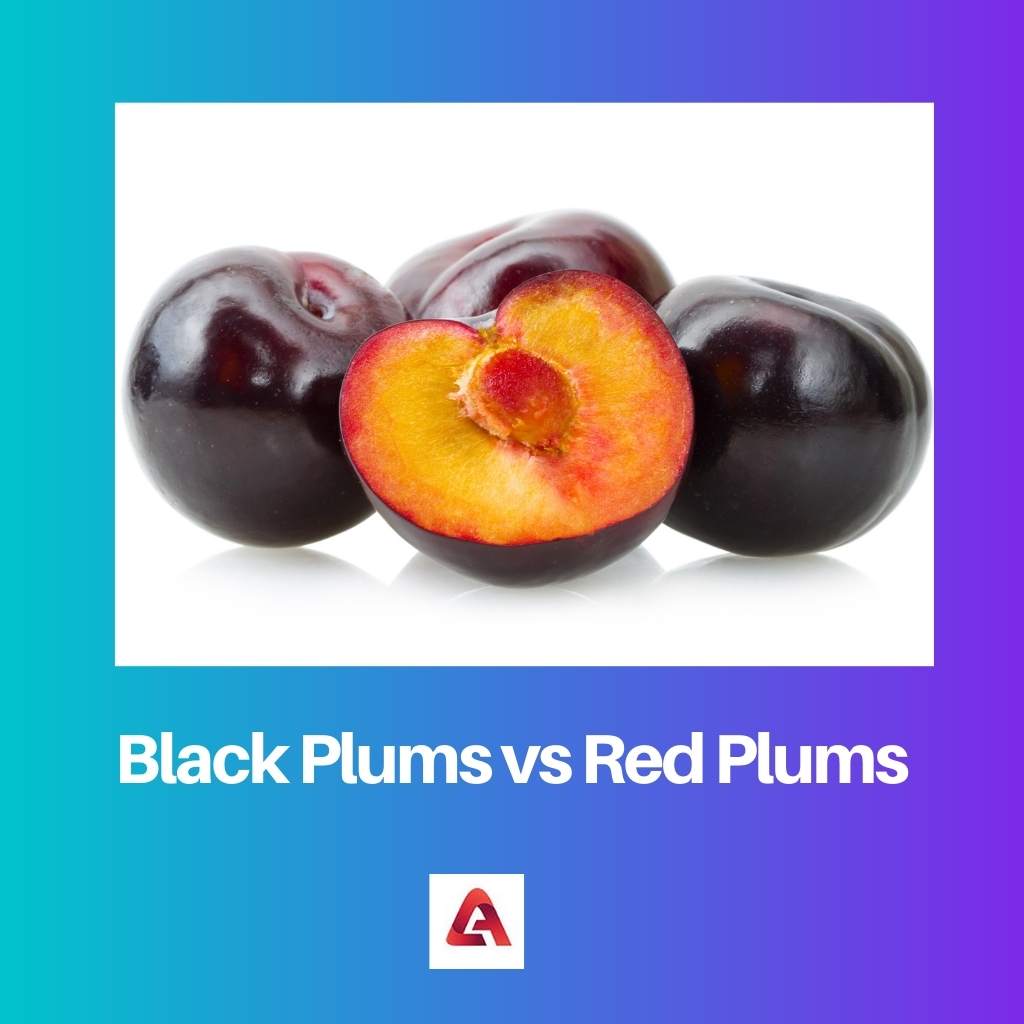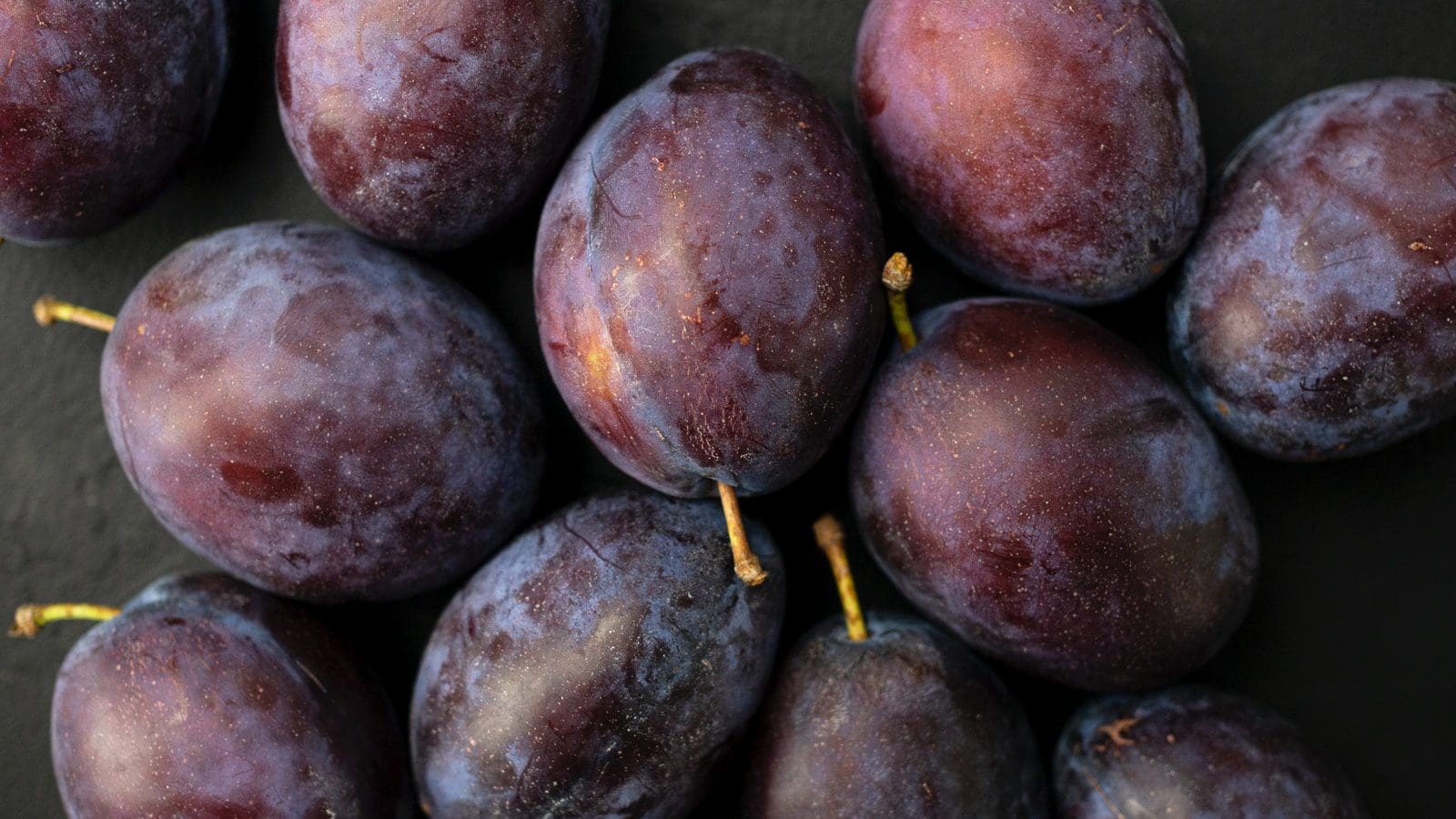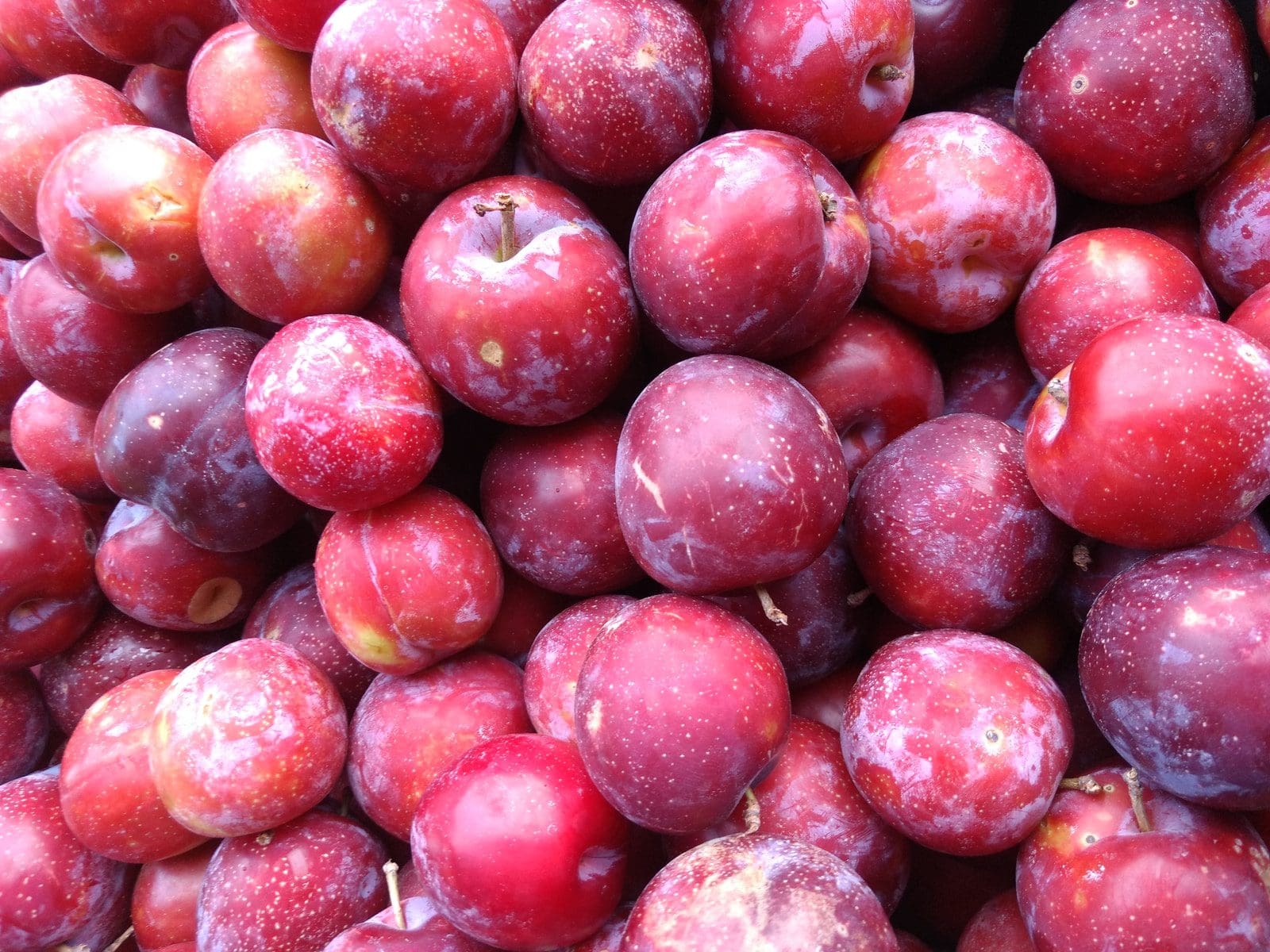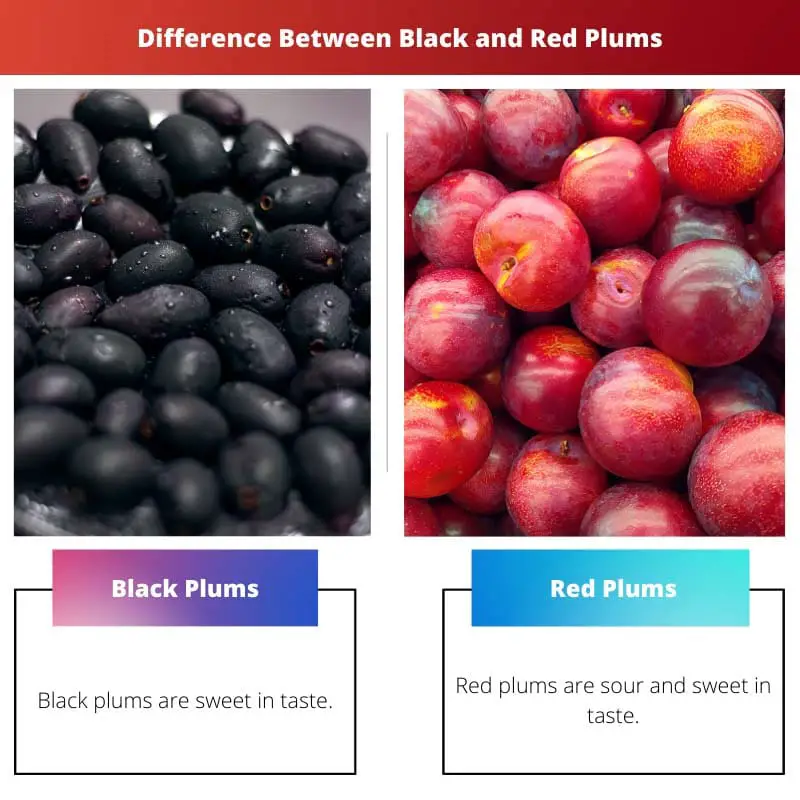Plums are known for being high in nutrition. In contrast to that, they are very juicy inside. Black and red plums are very good for health and help deal with many health issues like infections, eyesight, heart, and other problems.
There are fundamental differences in terms of usage and taste that differentiate them from one another.
Key Takeaways
- Black plums have dark skin and a sweet taste, while red plums have red skin and a tart taste.
- Black plums are larger than red plums, while red plums are juicier.
- Black plums have a higher sugar content than red plums, while red plums have a higher acid content.
Black Plums vs Red Plums
Black plums have deep purple-black skin and sweet, juicy flesh that ranges from deep red to yellow and are used in baking and canning and eaten fresh. Red plums have bright red skin and a slightly tart, juicy flesh that ranges from pale yellow to pink and are popular as a fresh snack.

Black plums are significant summer fruits with a thin blue-black skin layer covering the lusciously sweet pulp, which is the favourite of many.
It has a low glycemic index which makes it a savoury fruit for diabetic patients also. It also helps cure various health problems like heart and lung problems.
Red plums are known for containing a high percentage of water that keeps the body hydrated and, thus, cools the body’s temperature in the summer. Red plums are circular-shaped fruit with a thin red skin covering the sweet and sour tinge pulp.
Due to the tart flavour that its pulp possesses, it helps cut down the sweetness of baked items.
Comparison Table
| Parameters of Comparison | Black Plums | Red Plums |
|---|---|---|
| Taste | Black plums are sweet. | Red plums are sour and sweet. |
| Usage | These are used to make stewed prunes and sweet pies. | These are used explicitly in lentil soup and fish stew. |
| Appearance | These have blue-black skin and deep red or purple coloured flesh inside. | These have red skin and yellow coloured flesh inside. |
| Shape | Black plums elongated eclipse-shaped fruit. | Red plums are circular. |
| Size | Black plums are smaller. | Red plums are a bit large. |
What are Black Plums?
Black plum is also known as damson plum, java plum, Malabar plum, and by many other different names, is a very sweet and refreshing summer fruit. The black plum’s scientific name is Syzygiumcumini. It is widely cultivated and found in tropical and sub-tropical Asia and spread to Queensland.
It helps relieve stomach pain and is very helpful for various heart and lung diseases and even cancer-related diseases. Black plums are rich in iron and vitamin C, which increase the haemoglobin count of the body. Iron is essential as it helps in purifying blood.
These plums contain carbohydrates, magnesium, phosphorus, and vitamin B6 in adequate amounts in addition to iron and vitamin C. Black plums trees are very tall evergreen tropical trees. The trees can grow up to 20 meters in height.
At first, these plums are green in colour when they are growing. Then they turn into a blue-black colour with growth. The research shows that the gallic acid in black plum acts as an anti-HIV and anti-oxidant.
It possesses apoptotic activities. Black plum trees’ leaves have medicinal values, which cure many diseases. The black seed plum is also beneficial as the consumption of powered seeds helps relieve urination and digestive problems.
This fruit is consumed and used as a lotion for the skin and scalp. Taking the black plum fruit with roasted cumin helps tackle the acidity problem.

What are Red Plums?
Red plums are mouth-watering fruit with a tart flavour in the pulp. It is popular among people who love the sweet-sour combination. It contains a high amount of fibre that is very useful for the human body, helps to enhance intestinal transit, and cures constipation problems.
Vitamin E, the anti-ageing mineral, is contained in red plums. It is circular shaped and has a juicy pulp that has high water content in it.
Eating fresh in summer is preferred, and stored as prunes for winter. Red plums make delicious jellies and jams. Red plums possess phenolic compounds, which have anti-inflammatory properties.
Red plums are full of anthocyanins with high antioxidant properties to enhance the immune system. Minerals are essential for the body, and red plums provide a small amount of zinc, manganese, and copper, strengthening bones, muscles, and inner organs.
Red plum helps in losing weight also as it has low calories. Red plum trees are of different shapes and sizes. Red plums cut cholesterol and thus help in lowering the risk of obesity. The intensity of the red colour determines the nutritional value it contains.
The more the skin of the plum is deep red, the more it contains nutrients in high amounts. They are delicious as well as hold beneficiary vitamins and minerals that are required daily.

Main Differences Between Black and Red plums
- Black plums are blue-black skin outside that binds the juicy deep red or purple-coloured pulp inside, in contrast to red plums, which are red from the outside and have juicy yellow colour inside.
- Black plums are smaller in size in comparison to red plums.
- Black plums look like stretched circles which gives them an elongated ellipse shape, whereas, on the other hand, red plums are somewhat circular-shaped fruit.
- Black plums have sweet and juicy pulp, unlike red plums, which are sweet and sour with a tart flavour pulp.
- Back plums are mainly used to make stewed prunes. Many also commonly use these as stuffing for pork and sometimes chicken. Black plums also go well with sweet pies, while red plums are specially used for lentil soup and fish stew. As red ones have a sweet and sour taste, they are widely used to make jellies for sweet desserts.




